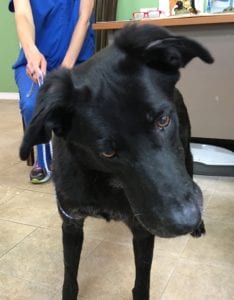By Linda Toga, Esq.

THE FACTS: I am one of four children. My siblings are Joe, Bill and Mary. My mother died last month. About 15 years ago, she went to her attorney and had a will prepared in which she named me as executor.
Rather than divide her estate equally between her four children, my mother essentially disinherited my brother Joe and divided her estate equally between me, Bill and Mary. At the time she executed her will, the reason my mother gave for her decision to leave Joe out was that he ignored her and was never around when she needed help.
About 10 years ago, Joe moved to a house within a mile of my mother’s house and started spending time with her. He has encouraged his children to visit their grandmother and my mother and Joe’s wife and children have actually vacationed together. Since he lived closer to my mother than any of her other children, Joe became the one my mother relied upon whenever she needed assistance of any kind.
Over the years, Joe and my mother developed a very special relationship. I don’t know why my mother never revised her will but I am convinced, based upon her relationship with Joe and things that she told me, that she would want him to receive a share of his estate.
THE QUESTION: As the named executor, am I able to divide my mother’s estate into four equal shares so that Joe receives one-fourth of the estate? I feel terrible leaving him out but Mary and Bill are adamant that I must follow the instructions set forth in my mother’s will. Are they correct?
THE ANSWER: Unfortunately for Joe, Bill and Mary are correct. As executor, it is your responsibility to marshal your mother’s assets and to distribute them in accordance with the terms of her will. As much as you may want to include Joe, and as convinced as you may be that that is what you mother may have wanted at the time of her death, you do not have any discretion with respect to the distribution of your mother’s assets.
If you unilaterally decide to pass part of the estate to Joe, Bill and Mary will be well within their rights to ask the court to remove you as executor. They could also ask that the judge surcharge you so that you would be personally responsible for the funds that were diverted to Joe.
The only way you can pass a share of the estate to Joe is if Bill and Mary agree that Joe should share in the estate. If everyone is in agreement, it is simply a matter of you, Bill and Mary each transferring a portion of your inheritance to Joe. If Bill and Mary do not want to share, you can always give Joe some or all of what you are entitled to under the will. As long as Bill and Mary receive what they are entitled to under the will, they will not have a basis for objecting.
It is unfortunate that your mother did not review her will and revise it once her relationship with Joe improved. If she had gone back to her attorney, it would have been relatively easy for the attorney to prepare a new will for your mother in which all of her children were named as equal beneficiaries, or to prepare a codicil to her will that would have the same end result.
It is important that people understand that estate planning is not the sort of thing that is done once and forgotten. Wills and other estate planning documents should be reviewed periodically and changed to reflect changed circumstances. If your mother had revised her will or had a new will prepared that took into consideration her improved relationship with Joe, you would not be in the position you are now of trying to make things right.
Linda M. Toga provides personalized service and peace of mind to her clients in the areas of estate planning, estate administration, real estate, marital agreements and litigation from her East Setauket office. Visit her website at www.lmtogalaw.com or call 631-444-5605 to schedule a free consultation.










 Occasionally swifts break from their typical fluttery flights to display courtship behavior. During these displays a mated pair flies together, about a foot or two apart, and synchronously throw their wings into a deep V-shaped position and glide for a second or two before resuming regular flight. It’s a little joy to behold and life is worth living due to little joys, right?
Occasionally swifts break from their typical fluttery flights to display courtship behavior. During these displays a mated pair flies together, about a foot or two apart, and synchronously throw their wings into a deep V-shaped position and glide for a second or two before resuming regular flight. It’s a little joy to behold and life is worth living due to little joys, right?






 MEET MAY!
MEET MAY!



